Phu Quoc is a long, heart-shaped island with a 20-kilometer beach aptly named “Long Beach” trailing up its western coast. This particular geography has made Long Beach the most popular sunset destination on the island, and with good reason. The beach strip is backed by cool cafes and bars that often host DJs or live bands, and good food is abundant.
If you’re looking for a fresh perspective, there are several other sublime but lesser-known sunset viewpoints on Phu Quoc Island -- and beyond it.
Ganh Dau Cape
Ganh Dau Cape sits on the northern tip of Phu Quoc’s western coast, the remote and unpretentious counterpart to Long Beach’s bustle and accessibility. The first ripples of the mountain range begin to rise steeply just behind the sand, enclosing the calm and shallow water in a protective ring of thick jungle foliage. This topographically-created secrecy, the lack of nearby construction, and the lack of significant visitor numbers all collaborate to make this tucked-away beach an exceptional patch of peace.
Ganh Dau Cape is the closest you can get to Cambodia on the Phu Quoc Island land mass, and from here you can see the ridged blue backs of Cambodian islands bubbling up out of the sea. Moored fishing boats bob serenely in the empty glass-blue space between the beach and the country across the ocean.
The sunsets in saturated colors, dialing up the contrast of the world and solidifying the fishing boats into solid black forms that rise and fall to punctuate the pinking horizon line.
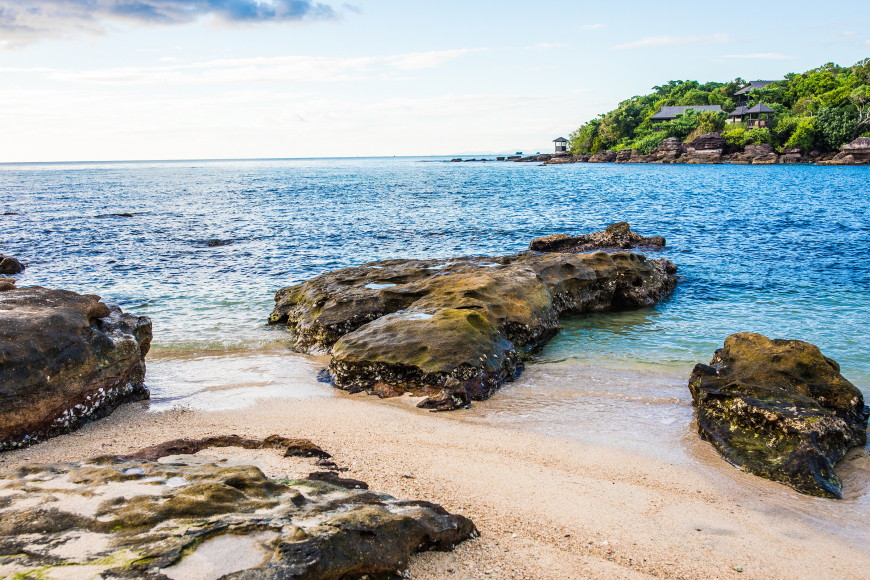
Dinh Cau Cape
Dinh Cau shrine sits on a sliver of an islet, jutting straight out into the estuary where Duong Dong River meets the sea. Dinh Cau is still used as a spiritual site, where fishermen come to pray for successful trips into calm water.
When sunset begins to kiss the cape, head up the 29 stone steps to the temple grounds. The pink and orange hues will begin to mix with the ink blot of an ocean ahead. To the left, Dinh Cau beach trails off into a horizon point between the coconut trees. To the right, the current rocks hundreds of moored boats like a lullaby. As the sun touches the waterline and true darkness begins to take hold of the sky, the tiny lights of squid-fishing boats blink on and twinkle like stars.
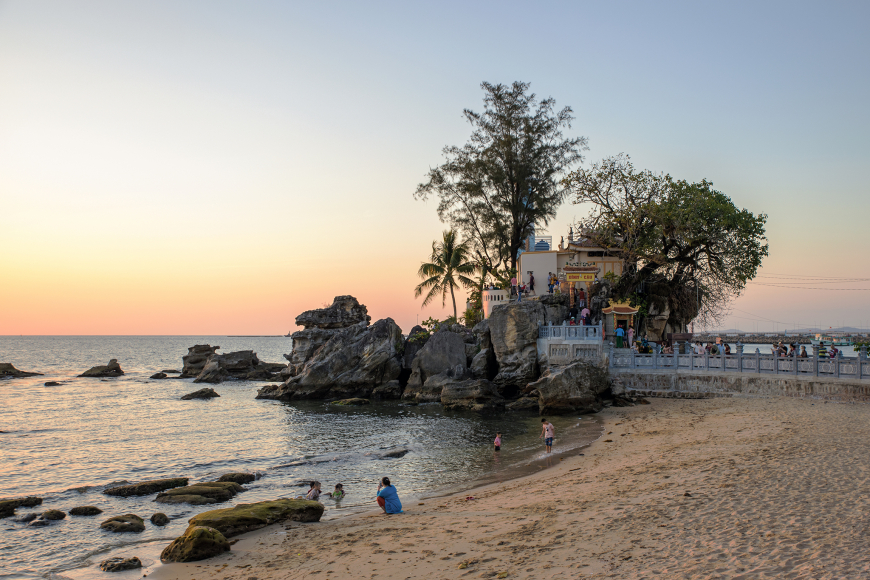
Ong Lang Beach
Just north of Duong Dong town and its busy harbor, Ong Lang Beach curves along the coast, the crescent-moons of its sandy bays separated by slabs of black volcanic rock. The fine, white-sand coastline here is thin and backed by fertile earth, from which orchards and gardens bloom. Palm trees and leafy green jungle plants sprout happily from the tropical soil to shade hip cafes and restaurants. The area has developed enough to make it comfortable and accessible to tourists – roads are paved, Western food is readily available, bars are comfortable, and serve cocktails. And yet, without high-rise buildings, it has retained its grassroots ambiance and low-key serenity.
Enjoy the sunset from the sand while the world fades into darkness and the beach is embraced on all sides by nature – trees to the east, volcanic rock to the north and south, and the endless ocean straight out west. Follow a tiny path to the Nguyen Trung Truc shrine, where locals leave incense to scent the breeze like an olfactory prayer.
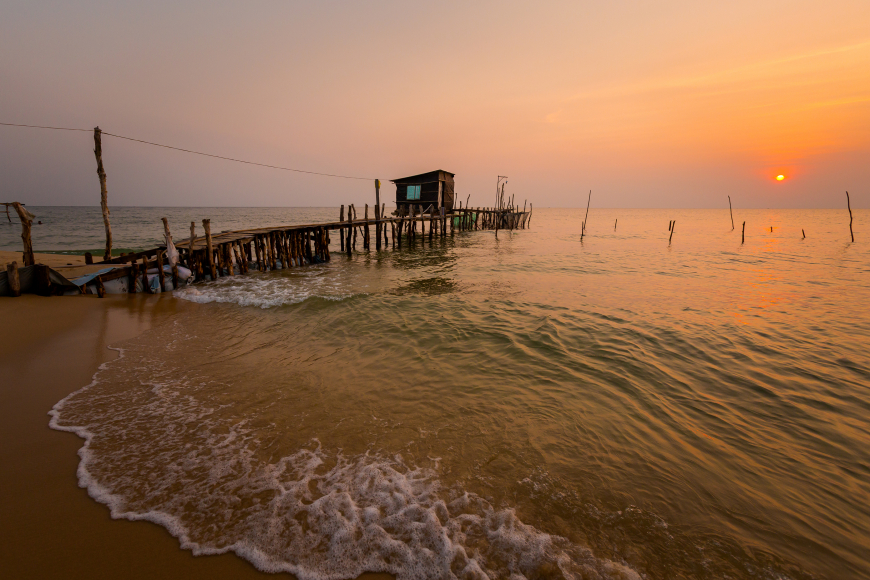
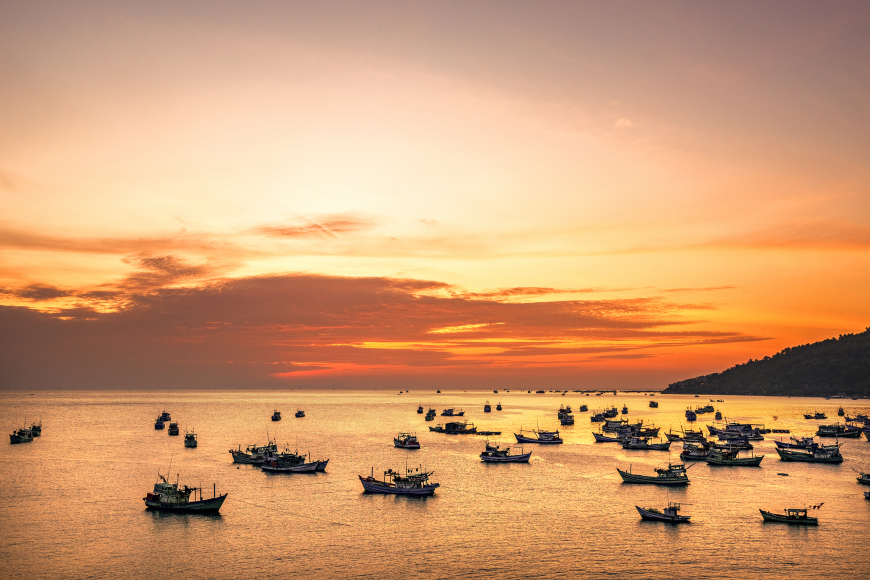
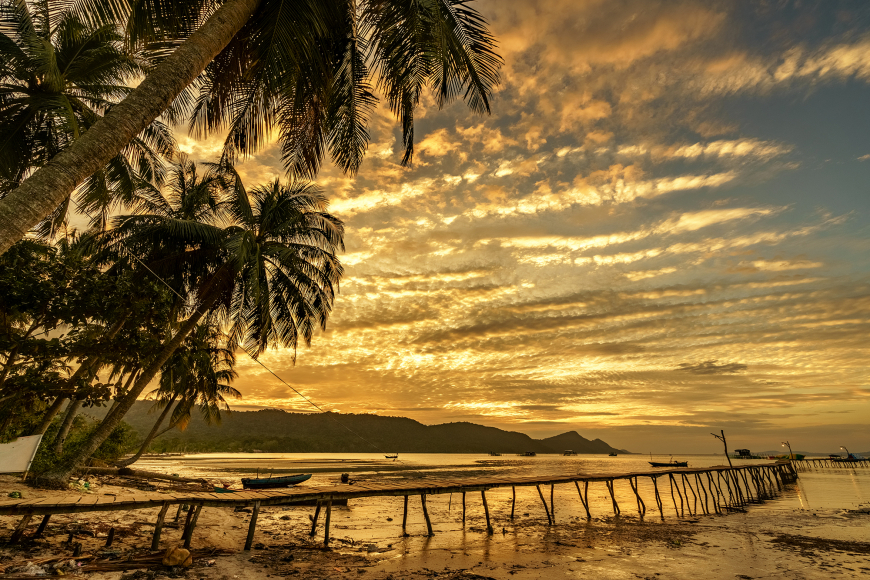
An Thoi Archipelago
The An Thoi Archipelago is a chain of islands to the south of Phu Quoc, each with its own sunset-lovely shoreline. Take a tour boat to hop between them, settling into a west-facing beach to watch the sunset over the ocean, which wraps these tiny islands in its expansiveness. Sunset on any of the An Thoi islands will swallow you in color, as the water reflects the sky and there is a little landmass in any direction to distract from the sight.
Dam Ngang Island is perhaps the most interesting sunset viewpoint in the archipelago. Dam Ngang is surrounded by strange rock formations jutting out of the water that cut bizarre shapes in dark silhouettes against the color-painted sky, lending a surreal look to the landscape.
Take the cable car back to the main island after sunset or, for an unconventional but stunning viewpoint, hop on the cable car right as the sun is setting and watch it sink into the ocean from high above the horizon as you make your way home to Phu Quoc Island.

